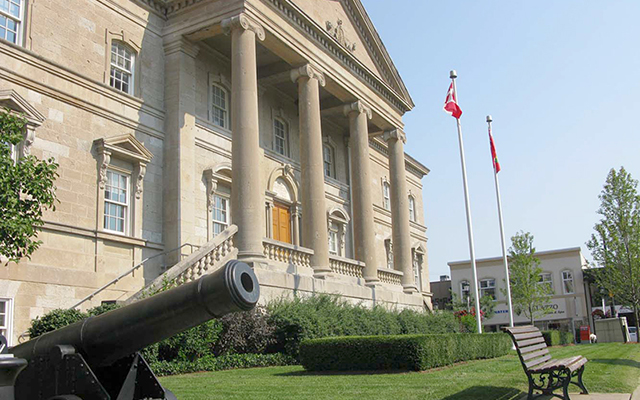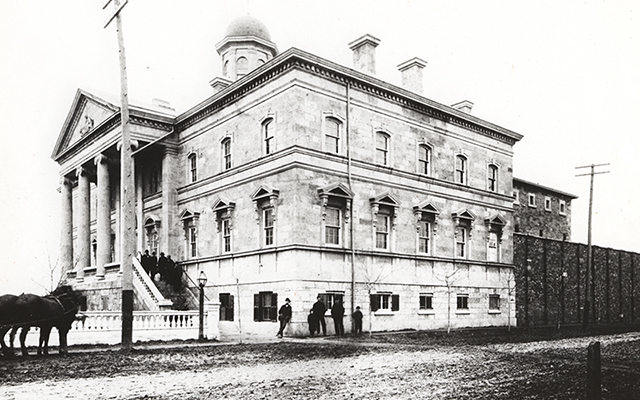The Welland Courthouse
The Welland courthouse, built from 1855 to 1856 at a cost of $100,000, was designed by Kivas Tully, one of Canada’s leading architects. Unfortunately, in June 1913, the building was gutted by a fire caused by defective electrical wiring. When the flames were extinguished, only the first floor and stone exterior remained untouched by the blaze.
Designed in a Neoclassical style and three storeys tall, the building’s front façade is dominated by a monumental pediment supported by four Ionic columns rising from the second-storey porch and flanked by twin staircases.
Constructed with evenly coloured Queenston limestone, the structure has numerous noteworthy features. The second floor has projecting pediments and brackets over all windows, while the third-level windows are trimmed by stone moulding with eared blocks and keystones. Continuous sills underscore the second- and third-floor structural openings. The main entryway is topped by a stone tablet and flanked by windows with curved pediments. Such a variety in window pediments and mouldings is quite rare.
A decorative frieze provides a base for the low-hipped roof, which hosts two cupolas. Initially, two small cupolas sat on either side of a large octagonal cupola capped by a domed roof.
The courthouse’s proportions and symmetrical façade illustrate a style and grandeur of architecture never to be seen again in Welland.
Located on the corner of East Main and Cross Streets, the courthouse is Welland’s most important architectural link to its past. Welland was a village of little significance before its designation as the county seat, and the city's fortunes were tied to this designation. However, after the courthouse was constructed, Welland began to grow and prosper, soon overshadowing rival communities like Port Robinson, Fonthill, and Cooks Mills.
The initial courthouse had a maximum capacity of 72 prisoners – 60 male and 12 female – and was staffed by the jail’s governor, turnkey assistant, and three guards.
Justice has been dispensed in the courthouse for more than 100 years. A gallows set up in the jail yard were used for hangings before they were moved indoors early in the 20th century. Several offenders were executed for their crimes, and the last execution occurred in January 1958, 99 years after the first one in 1859.
The courthouse is an architectural monument to the history of Welland.
Contact
To contact the Courthouse directly, please call 905-735-0100
- Heritage Advisory Committee
- Civic Square,
60 East Main St., Welland, ON L3B 3X4 - info@wellandheritage.ca

